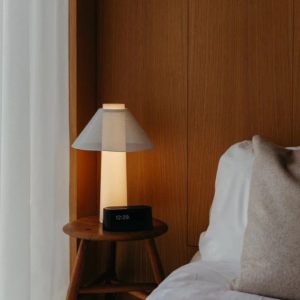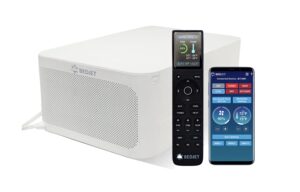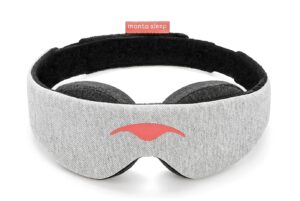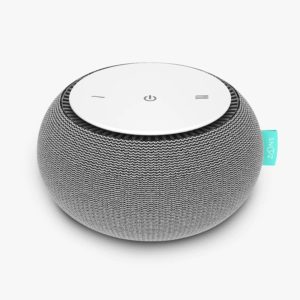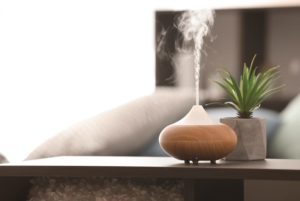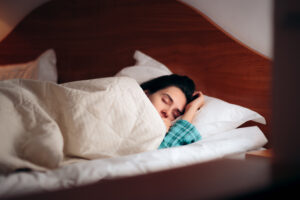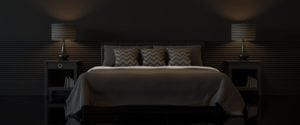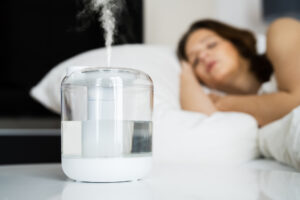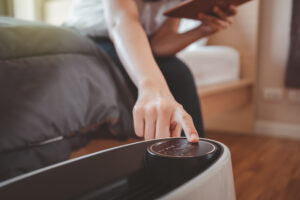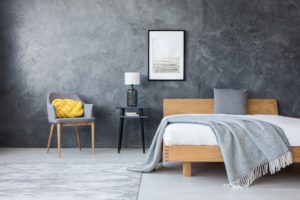When you buy through our links, we may earn a commission. Products or services may be offered by an affiliated entity. Learn more.
How to Cool a Room During Summer
Overheating is one of the biggest barriers to getting comfortable in bed, which is essential to consistent, high-quality sleep. On warm nights, the higher temperature can make it hard to fall asleep or lead to unwanted awakenings during the night. Knowing how to cool your bedroom can bring relief and help you sleep longer with fewer interruptions.
Tips for Staying Cool During Sleep
Air conditioning is an effective way to stay cool when temperatures rise. But for those without air conditioning, knowing how to maintain a comfortable temperature can be vital to avoid sleeping problems during hot weather.
Two key strategies — limiting heat buildup and cooling things down — are your best bet for keeping your room and your body cool without the help of air conditioning. Multiple approaches can keep your home from retaining heat, which makes it easier for your body to use its natural processes to stay cool.
Close Blinds and Curtains
During the day, lower your blinds and close curtains to keep sunlight and hot air from moving into your home. Insulated cellular shades, also known as honeycomb shades because of their internal construction, can block up to 80% of unwanted solar heat .
Use Heat-Emitting Appliances Less
Try to avoid indoor cooking with your oven or stove, both of which give off plenty of heat. Even toasters and microwaves put off warmth, so try to avoid extended use of them. Running other large appliances like washers and dryers can drive up the temperature of your home as well. It can also be helpful to switch out any incandescent bulbs in the home, as they are energy inefficient and produce high amounts of heat .
Invest in Lightweight Sleep Accessories
Use bedding that sleeps cool. Sheets made with breathable materials like high-quality cotton, Tencel, or bamboo-rayon can help wick moisture away from your body to evaporate and cool down more quickly. For covers, use a top sheet made of breathable materials or a light blanket that prevents trapped heat. It can also be helpful to sleep in light, breathable clothing so that air can circulate around your skin.
Try a Cooling Mattress Pad
Cooling mattress pads help reduce heat retention through their design and materials. The most advanced models pump cooled water through tiny tubes in the pad to lower your bed’s temperature.
Stay Hydrated
Drinking plenty of water throughout the day can keep your body cool and prevent heat-related illness. Sipping ice water before bedtime can help prime your body for sleep and prevent you from overheating throughout the night. Incorporating cold, refreshing showers into your daily bedtime routine can also promote temperature regulation and peaceful sleep.
Use a Dehumidifier
Humidity can make a room feel hot and stagnant, making it difficult to sleep. Excess humidity can also increase wakefulness throughout the night, and reduce the amount of time spent in deep sleep . Dehumidifiers work by neutralizing moisture content in the air, creating an environment that feels cooler and lighter, promoting restful sleep.
Utilize Cold Household Items
Take advantage of your freezer. Ice packs, especially the kind made to avoid condensation on their exterior, can be used in bed and applied to areas like your head, neck, or wrist to give your body a sense of coolness. A low-cost way to try to recreate this is by moistening a towel or shirt and leaving it in the freezer for a few hours. When you need to cool down, you can remove it from the freezer and wear it around your neck or other pulse points.
Open More Windows
A cross-breeze occurs when there is an entry and exit point for air, allowing wind and the natural movement of air to bring some relief from the heat. To create a cross-breeze in your bedroom, open two or more windows or doors so air can flow in through one and out the other. Feel how the air is moving and adjust the openings to get more airflow. Generally, you want the opening where air is coming in to be smaller than the one where it’s going out.
Use a Circulating Fan
Fans can give a boost to ventilation by moving air when wind or natural cross-breezes are limited. Fans of all types can be helpful, including table fans, taller floor fans, ceiling fans, and window-mounted fans. If you have multiple fans, you can position them at different windows with one blowing in and one blowing out to strengthen cross-ventilation.
Consider Roofing Materials and Insulation
The sun beating down on your roof can heat up your attic, which makes it take longer for hot air to rise and ventilate out of your home. A reflective roof helps keep your attic, and by extension the rest of your home, cooler.
Buy or Make an Evaporative Cooler
An evaporative cooler boosts ventilation further by chilling the air before it is distributed through your home. These devices cool and humidify air as it enters your home by moving it over a series of wet pads. Evaporative coolers are most effective in dry climates and can be installed in a number of ways depending on the size and layout of your home.
When a full evaporative cooler is not in the budget, you can create a makeshift version with a table fan and a tray of ice or ice water. By setting up the fan to draw in air that has been chilled by the ice, you can direct a cool breeze your way. Misting fans offer a similar effect, providing a touch of moist, cool air to the fan’s ventilation.
Know the Dangers of Heat-Related Illness
Even if you follow numerous steps to keep your room and your body cool during summer heat, it is important to be aware of the warning signs of heat-related illness like heat stroke and heat exhaustion. If a person is overheating and nauseous, dizzy, or close to passing out, it is important to get help immediately. Older adults and people with chronic health conditions are at a higher risk of heat-related illnesses.

Still have questions? Ask our community!
Join our Sleep Care Community — a trusted hub of sleep health professionals, product specialists, and people just like you. Whether you need expert sleep advice for your insomnia or you’re searching for the perfect mattress, we’ve got you covered. Get personalized guidance from the experts who know sleep best.
References
4 Sources
-
Office of Energy Efficiency & Renewable Energy. (n.d.). Energy efficient window attachments. U.S. Department of Energy., Retrieved May 11, 2023, from
https://www.energy.gov/energysaver/energy-efficient-window-attachments -
Office of Energy Efficiency & Renewable Energy. (n.d.). When to turn off your lights. U.S. Department of Energy., Retrieved May 10, 2023, from
https://www.energy.gov/energysaver/save-electricity-and-fuel/lighting-choices-save-you-money/when-turn-your-lights -
Okamoto-Mizuno, K., & Mizuno, K. (2012). Effects of thermal environment on sleep and circadian rhythm. Journal of Physiological Anthropology, 31(1), 14.
https://pubmed.ncbi.nlm.nih.gov/22738673/ -
National Center for Environmental Health, Agency for Toxic Substances and Disease Registry. (2017, September 1). Warning signs and symptoms of heat-related illness. Centers for Disease Control and Prevention., Retrieved May 10, 2023, from
https://www.atsdr.cdc.gov/index.html


